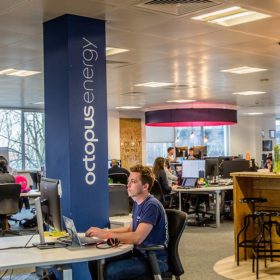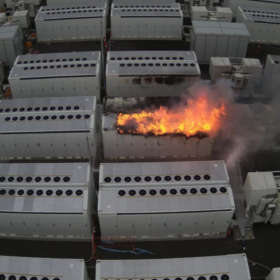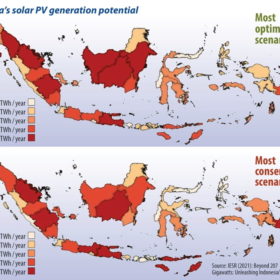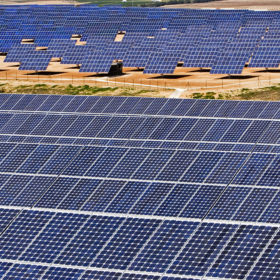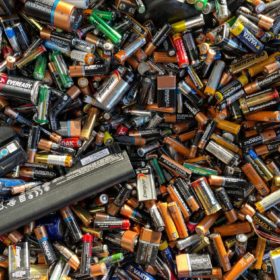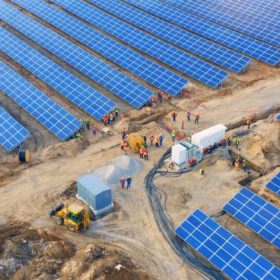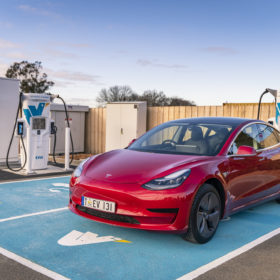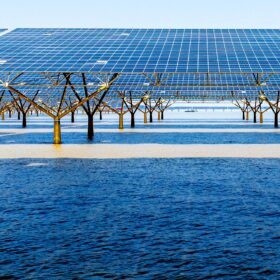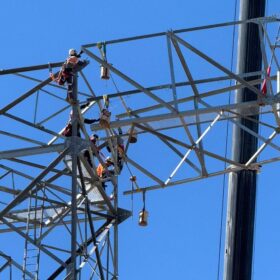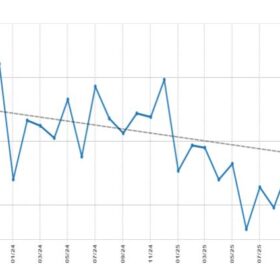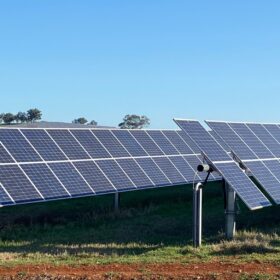How Origin can pull the plug on gas and top Australia’s clean-energy leader board!
Australia’s big energy providers are being forced to take stock of the costs of fossil fuels versus renewables. One industry analyst and commentator has a fresh recipe for success for Australia’s biggest wholesaler and retailer of gas.
Fire at Victorian Big Battery now under control
Speculation will be rife as to the cause of the fire which destroyed one Tesla Megapack and damaged another in Moorabool on Friday. Investigators are waiting until the site is deemed safe to begin their forensic examination.
First Solar plans a 3.3 GW Indian module fab
The U.S.-based manufacturer is planning a vertically integrated thin-film solar module manufacturing facility in India. The factory will likely be built in Tamil Nadu and become operational in the second half of 2023.
Sunday read: Indonesia’s coal exit plan
Indonesia, the second-biggest coal exporter in the world, is now taking more steps to reduce its dependency on “black gold” as it starts to consider clean energy.
Saturday read: In conversation with UNSW’s Anna Bruce on distributed transformation
The time is now for the energy consumer, says Anna Bruce, as energy “prosumers” produce, consume, and provide electricity and grid services in previously unimagined ways. Bruce, a senior lecturer at the University of New South Wales’ School of Solar Photovoltaic and Renewable Energy Engineering (SPREE), leads work on the role of distributed energy resources in the energy transition, analysing firsthand the dizzying level of complexity it brings.
Queensland launches “Climate Action Plan 2030”, or at least, the website for a plan
The Queensland government released its Climate Action Plan 2030 online yesterday, an apparent roadmap for the Sunshine State to meet its renewable 2030 and 2050 targets while creating jobs and helping the economy recover from the impact of Covid-19. But is the Action Plan merely a plan to take action?
Aldoga Solar Farm’s 600 MWp expansion receives approval
Acciona Energía has received approval from the Queensland state government for an expansion of its plans for the Aldoga Solar Farm outside Gladstone. Originally slated as a 250 MW project, the project will now reach a capacity of 600 MWp and work to support the development of Gladstone’s green hydrogen hub.
Federal government launches Battery Stewardship Scheme
Assistant Minister for Waste Reduction and Environmental Management, Trevor Evans, has announced a newly accredited Battery Stewardship Scheme that he says will triple the battery collection rate over a period five years and divert 90% of the collected materials from landfill.
Mining giant unveils $73 million hybrid solar+storage project
Mining giant BHP has taken another step on the path towards a renewable energy future, commissioning a 48.2 MW solar + storage hybrid power facility that will help power its Nickel West mining operations in regional Western Australia.
ARENA tips $25 million funding package to drive EV uptake
Petrol retailer Ampol will install more than 120 ultra-fast electric vehicle charging stations across its service station network after the Australian Renewable Energy Agency awarded it a share of almost $25 million in funding designed to drive the uptake of electric vehicles in Australia.
